Arbor Doctor September 2023 client update and latest blog postings

Boxwoods have become the number one phone call we are getting at Arbor Doctor. Almost everyone has boxwoods in their landscapes and the problems are mounting. In this photo, boxwoods have been decimated by the Box Tree Moth along the Little Miami Bike Trail near Miami Riverview Park. Photo by Ron Rothhaas.
Welcome to meteorological fall!
Our phones have been ringing off the hook, namely about boxwoods. We also seem to be struggling in the rain department. We have seen a lot of tree and landscape problems this year due to last year’s drought. The time to prevent future drought damage is now. Be particularly vigilant with watering newer trees and shrubs. It can take several years for them to establish their root systems.
2023 Saga of the Boxwood
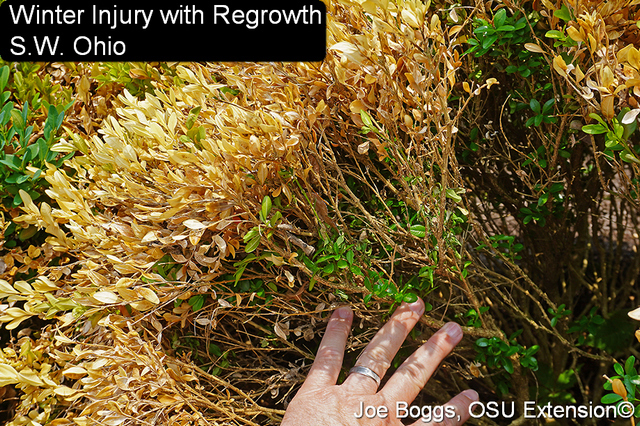
For a number of years, the number one call to Arbor Doctor has been regarding Colorado blue spruce which progressively thin out and die due to Needlecast disease. After about 5 years at number one Needlecast has finally been surpassed by…..boxwoods. Boxwoods have been center stage this year, and the picture isn’t pretty.
Here are the articles I have placed on my blog just this year regarding boxwoods:
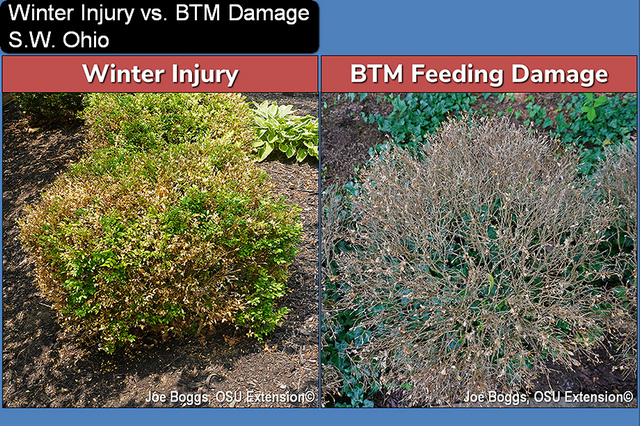
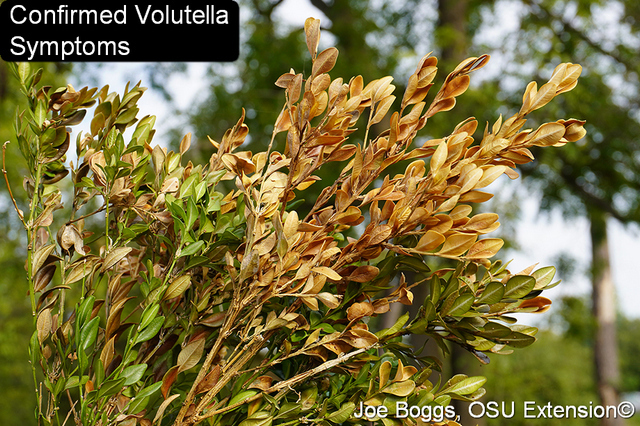
It is difficult to distinguish between the many boxwood problems. Volutella seems to be widespread and can only be controlled by pruning out the dead, sterilizing pruners between cuts, and limiting stress. Boxwood die back does not currently have a treatment protocol. The Box Tree Moth has been confirmed in Loveland but if you are in other areas it is less likely you are seeing that, at least for now. We will treat for that as a part of our plant health care program. Our treatments also address boxwood leaf miner and boxwood psyllid. If boxwood blight is found, a more intensive treatment regimen will need to be followed and we can provide that.
So, to summarize:
- Winter damage. Prune out dead areas.
- Volutella Canker. Prune out dead areas, being careful to prune below cankered areas, and sterilize pruners between cuts.
- Boxwood Die Back. Prune out dead areas, being careful to prune below cankered areas, and sterilize pruners between cuts.
- Box Tree Moth. Mainly in and around Loveland, OH. Our treatments will address this but make us aware if you find it in your landscape.
- Boxwood Psyllid and Boxwood Leaf Miner are addressed by our plant health care program.
- Boxwood Blight. If confirmed, a more intensive treatment regimen will be required.
- Boxwood stress. Caused by weather and cultural conditions. See watering and mulching instructions below.
It’s Dry Out There.
I can’t emphasize enough the importance of watering. I have looked at a lot of trees and shrubs which are in trouble because they were not watered last fall in the drought. I am afraid the inconsistent rain this summer will cause more problems. I believe the fall drought accentuated the negative effects of the holiday cold snap. Please see the watering instructions below.
Don’t forget to water when needed!
Please remember to water…correctly!
Water once per week, one inch per week, under the entire branch spread, in the absence of rain, May through November. Either rainfall or your watering should equal the one inch per week. Do not water if the soil is already moist. Put out a sprinkler and a straight sided soup can or rain gauge and measure one inch per week. Measure the rainfall which falls in your yard. Your trees don’t care what fell at the airport!
For new trees and shrubs, be sure to saturate the root ball once or twice a week. Container grown material is especially susceptible to drying out in the first couple years after planting.
If burlap was left on new trees, it will repel water and the tree or shrub may die. Be sure burlap and twine are removed from the top of all root balls. If your landscaper disagrees, refer him or her to the American National Standards Institute (ANSI) industry standard for installation of landscape plants.
To the extent possible recycle fallen leaves back into the soil around the trees and maintain mulch around the trees to a radius of at least 3-5 feet. Keep mulch off trunks. Use a coarse textured mulch. Avoid triple shredded mulch. Aged arborist wood chips, mulched and composted leaves, pine bark, and pine straw are all good. Very finely ground mulches such as triple ground hardwood mulch are not beneficial and may inhibit moisture and oxygen exchange
Aphids
The aphid activity has calmed down. Aphid populations reached Biblical proportions this year. Fortunately, they seldom cause any real or lasting damage to trees.

“I’m Suffocating”
Dogwood I excavated during a recent client visit. The tree had not been doing well and no wonder. The root flare was buried several inches too deep.
Virtually every landscape I visit has trees and shrubs which are buried too deep. The root and trunk flare must be above the surface for your trees to be healthy.
Emerald Ash Borer is still a thing
I often hear people say that the Emerald Ash Borer has moved through and is no longer a threat. Nothing could be further from the truth. Yes, populations have decreased but it is still here and may be on the increase again. Currently, a 3 year treatment rotation is sufficient for control.
What’s Happening Now. Timing of Tree Planting and Landscape Installations
We are currently doing early fall treatments. We are continuing air knife, pruning and bed weed control treatments. We are receiving a high volume of calls and requests and are following up as fast as we can. This is very definitely a busy season.
Several people have asked when we will do our tree plantings. Most tree plantings are best done in fall, defined horticulturally as October, November, and December. Many nurseries will not dig trees when it is hot and/or dry. This is true for most trees. Western arborvitaes, many magnolias, and a few others need to be planted earlier. A few trees are best planted in spring.
We often get questions about the timing of our treatments. To a large extent, fungal infection is prevented and not cured so more frequent treatment in spring and early summer is often needed to do this efficiently. If we made frequent visits in the spring it is not because we were trying to add extra treatments but rather because we scheduled it that way for optimal effectiveness.
For any questions or inquiries you may submit a request in our customer portal or contact Director of Operations Camille Rechel at 513-661-2673 or camille@arbordoctor.com.
Spotted Lanternfly
We continue to see Spotted Lanternfly increasing across Ohio. This invasive insect is a problem for vineyards and orchards but my also be a problem in home landscapes. It does not directly kill trees or shrubs but can weaken them. Our plant health care programs will address this. Like Japanese beetles, it will likely be impossible to eliminate all Spotted Lanternflies but suppression or populations and damage will be the goal.
The Gall of Those Galls
Joe Boggs loves to write about plant galls. You will find them on your trees and plants. A vast majority are not harmful and most are actually beneficial.
Our team updates
We spend a great deal of time and resources on training and field visits. We have a great core horticultural team this year of (left to right) Plant Health Care Specialist Ali Randall, Plant Health Care Specialist Noah Riggs, Office Manager Diane Smith, Principal Owner Ron Rothhaas, Director of Operations Camille Rechel, and Plant Health Care Team Lead Steve Middleton.
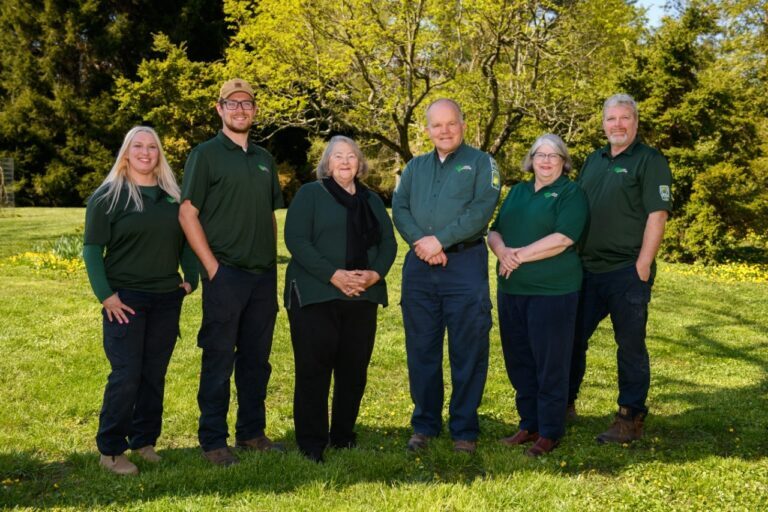
Updates posted on our blog pages over the past couple months:
Some additional thoughts from Ron
Arbor Doctor LLC is a contributing sponsor this year for the Harvest Home Fair.
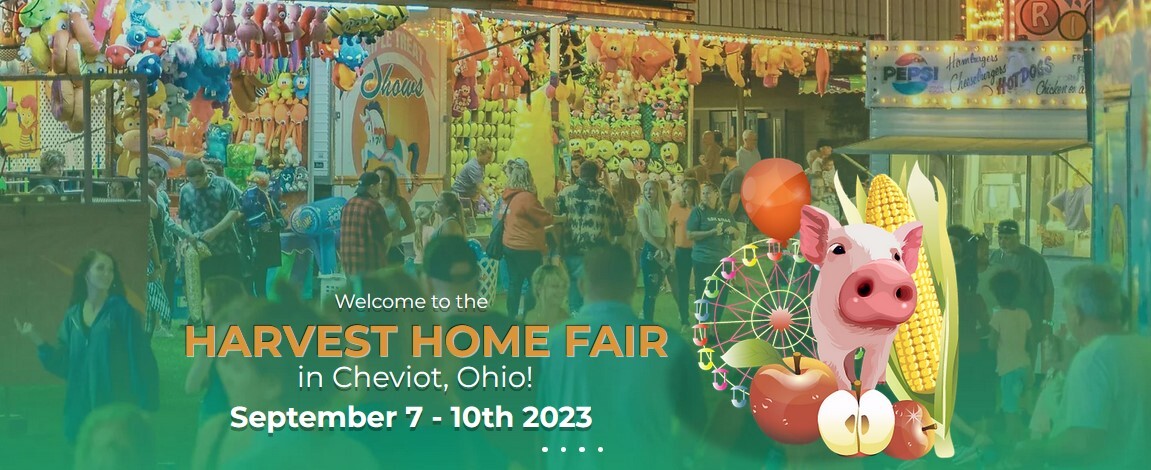
For more information: Visit Harvest Home Fair's website
Arbor Doctor will also be a sponsor for the Native Plant Symposium at the Cincinnati Zoo and Botanical Garden.

It’s interesting how a person spends years in a profession and seemingly wakes up one day and realizes, “hey, I’m one of the ‘old guys\'”, or veterans, in this profession. After over 40 years in horticulture and arboriculture, that’s where I find myself. Don’t worry, I’m not about to announce my retirement, even though many people my age are. The truth is, I love what I do. I love meeting with all of you, helping you with your tree and landscape health challenges, and hopefully making the world a better place, one tree at a time.
My colleague Blair Glenn in California has some thoughts on this, and I commend them to you.
Let’s talk about redwoods, the wisdom of the wise, being a life long learner, and tree preservation
As Blair points out, one of the charges for us “old guy” veterans is to pass along our knowledge and expertise to the younger people in our profession. At Arbor Doctor, I take that seriously. Our team does in house training and we attend a number of workshops and diagnostic walkabouts. We are all learning.

When an Arbor Doctor team member comes to your home or business, you can be assured that they will either know the answer or be able to seek out an answer. As my advisor at Ohio State said, ‘we teach you 15% of what you need to know and how to find out the other 85%.’ Do be aware, however, that sometimes there is not a good answer. Just as in human medicine, we are still learning. Research is ongoing. New things are continually showing up on our doorstep.
As for me, my “retirement” plan is to continue to do what I’ve been doing for years, consulting and working with clients regarding their trees, as long as my mind and body allow me to do so. And, of course, as long as God wants me to do so. My plans are not always His.
Have a great September. If you have any questions or inquiries you may submit a request in our customer portal or contact Director of Operations Camille Rechel at 513-661-2673 or camille@arbordoctor.com.
Sincerely,
Ronald E. Rothhaas, Jr.


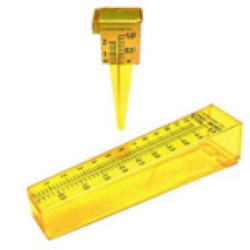
.jpg)
.jpg)
